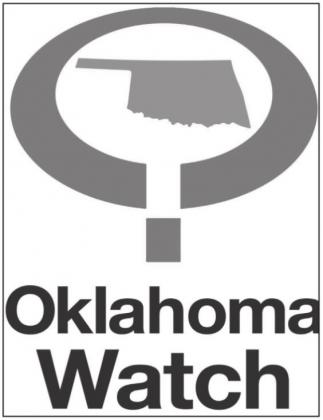By Oklahoma’s early success in providing COVID-19 shots has waned in recent weeks, with appointments at mass-vaccine events slowing and public health officials making targeted pitches about the importance of the vaccine.
The two-week pause in administering the Johnson & Johnson vaccine after concerns over a rare blood clot linked to that vaccine contributed to the slowdown, officials said. Despite that, all three approved vaccines — the two-dose Pfizer and Moderna and the one-dose Johnson & Johnson —are available again across the state.
More than 2.2 million doses of COVID-19 vaccines have been administered in Oklahoma, according to the Oklahoma State Department of Health. Almost 60% of those older than 65 are fully vaccinated. About one-third of the state’s population older than 16 is fully vaccinated.
An Oklahoma Watch analysis of vaccine doses administered by ZIP code shows large parts of eastern Oklahoma and several places in the rural western parts of the state lagging in vaccination rates. The analysis paired vaccination rates with demographic and income data for each ZIP code.
Overall, 47 of the 626 ZIP codes with vaccination data had first doses higher than the state average, while 62 ZIP codes outpaced the state as a whole for completed doses.
Generally, ZIP codes with higher median household incomes also had higher vaccination rates for both first and completed doses. Just a handful of ZIP codes with a higher proportion of Hispanic residents had first and completed doses higher than the state average. The same was true with ZIP codes with a higher proportion of Black residents.
The state health department provides the ZIP code vaccination data biweekly. The state’s vaccination tracking system doesn’t include vaccines administered by most of the state’s tribes. The Indian Health Service ships COVID-19 vaccines directly to tribes, with more than 323,000 doses administered so far in the region that includes Oklahoma and Kansas.
Health experts said describing those who haven’t yet received a vaccine as hesitant or resistant could also be masking real access issues to the vaccines. Those include inadequate transportation, no time off work or fewer available appointments on nights and weekends. Another group is what Dr. David Chansolme calls the “vaccine complacent.”
“We tend to chunk people into people who want it and people who don’t want it,” said Chansolme, medical director of infection prevention at Integris Health in Oklahoma City. “There’s a huge middle ground of what I call vaccine complacent. Not everybody can take off from an hourly wage job. Not all employers are encouraging people to get vaccinated.”
While large vaccination sites are still being offered, the state’s vaccination effort is transitioning to smaller, more targeted efforts. Doctor’s offices, additional pharmacies and county health department “strike teams” setting up at community events are among the options to increase access. The Payne County Health Department offered vaccines on Saturday at the Tumbleweed Calf Fry Festival.
“We’ve already picked the easy ones, right?” said Dr. Mary Clarke, president of the Oklahoma State Medical Association. “Now we need to get to the ones who want it but are still having trouble with access. There are a lot of people who want the vaccine, but because of constraints of getting to where they need to be, they can’t get to the doctor’s office. They don’t have $5 in gas money. They don’t have a car. They don’t have internet service. There are a lot of people in lots of the rural communities who still want the vaccine who just cannot get to them.”
More than 1,700 health care providers, including doctor’s offices and clinics, have signed up for the state’s provider program to administer COVID-19 vaccines. As of Friday, about 1,200 of them had active vaccine access points. Clarke said the resumption of the Johnson & Johnson vaccine, which is just one dose and doesn’t need specialized refrigeration, will help to expand vaccine availability through doctor’s offices.
“We’re working on trying to make patients feel a little bit more comfortable, and there are quite a few patients who want their physician offices to get that vaccine because of comfort level,” said Clarke, who works in Stillwater as a primary care physician. “I personally have had many patients who have not had the vaccine yet who are waiting because they want it from our office.”
In Tulsa County, the federal government and local public health agencies have been offering vaccines at the Tulsa Community College Northeast Campus. Bruce Dart, executive director at the Tulsa Health Department, said the center can administer up to 3,000 doses per day. The site was selected because that area has higher proportions of lowerincome households and people of color.
Dart said earlier this week vaccinations have slowed at the community vaccination center but that several agencies are also going door-to-door in nearby neighborhoods to let people know about vaccine availability. The center, which opened April 21, is scheduled to last eight weeks.
“If the center is meeting the need, then I think that’s great,” Dart said. “If it’s not, we’ll have that conversation about what to do next, whether we redeploy, cut down the numbers a little bit or change the schedule even more.”
Paul Monies has been a reporter with Oklahoma Watch since 2017 and covers state agencies and public health. Contact him at (571) 319-3289 or pmonies@ oklahomawatch.org. Follow him on Twitter @pmonies.
Oklahoma Watch, at oklahomawatch.org, is a nonprofit, nonpartisan news organization that covers public-policy issues facing the state.


